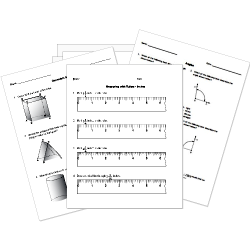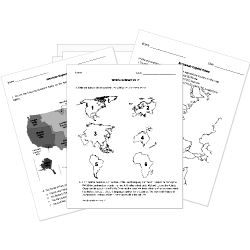Nuclear Force
Nuclear Force
This lesson aligns with NGSS PS1.A
Introduction
Have you ever wondered what keeps everything in the tiny world of atoms sticking together? It's like magic, but it's a force. The motion of electrons within an atom is dictated by the Coulomb force. As we understand, the binding energy per nucleon is approximately 8 MeV for nuclei of average mass. This value significantly exceeds the binding energy observed in atoms. Consequently, the force responsible for holding a nucleus together must be strong and distinct. This article aims to explore the characteristics of nuclear force, it’s types as well as the properties of nuclear force.
Historical Perspective
After the discovery of the neutron by Chadwick in 1932, it was clear that the atomic nucleus comprises protons and neutrons. In such a nuclear system, electromagnetic forces cannot be the reason why the constituents of the nucleus are sticking together. The repulsive electrical Coulomb force between the protons would otherwise blow the nucleus apart. Hence, the concept of a new strong nuclear force was introduced. In 1935, Japanese physicist Hideki Yukawa (Yukawa, 1935) proposed the initial theory for this force, suggesting that nucleons exchange particles, creating the force that holds the nucleus together.
Nuclear Force:
The force that binds the protons and neutrons together in atomic nuclei is called the nuclear force. Unlike the familiar electromagnetic forces that repel positively charged protons, nuclear forces work against these repulsive forces, keeping the nucleus intact.
Nuclear forces are the forces that act between two or more nucleons effectively binding protons and neutrons into the atomic nuclei. This force is a short-range force and causes the stability of the nucleus. Nuclear force is commonly divided into two types : strong nuclear force and weak nuclear force.

Strong Nuclear Force:
This force is responsible for binding protons and neutrons together, overcoming the electrostatic repulsion between positively charged protons.
One interesting aspect of the strong force is its independence of charge. Unlike electromagnetic forces, which depend on the charge of the interacting particles, the strong nuclear force acts equally on protons and neutrons, contributing to the stability of various atomic configurations.
Weak Nuclear Force:
In addition to the strong force, another crucial player in the nuclear arena is the weak nuclear force. Unlike the robust and short-ranged strong force, the weak force operates over larger distances and is responsible for processes such as beta decay.
Beta decay involves the transformation of a neutron into a proton, accompanied by the emission of an electron (beta particle) and an antineutrino. This process is governed by the weak force, highlighting its role in facilitating nuclear reactions and maintaining the delicate balance between protons and neutrons in certain isotopes.


Features of Nuclear Force
- It is attractive in nature but with a repulsive core. Therefore, the nucleus is held together without collapsing in itself.
- The nuclear force acts between the charges as the gravitational force between masses. This is much stronger than the repulsive Coulomb force that pushes the particles away.
- The distance between two nucleons is quantified in femtometers (1fm = 10–15m). The range of a nuclear force is exceptionally short. Specifically at 1 Fermi, the distance between particles in a nucleus is tiny. Within this range, the nuclear force is much stronger than the repulsive Coulomb’s force. However, if the distance is beyond 2.5 Fermi, the nuclear force becomes practically non-existent.
- Interestingly, the nuclear force acts uniformly on all nucleons, regardless of being neutrons or protons. Once the Coulomb resistance is taken into consideration, nuclear force affects everything in the same way.
- Within a distance less than 0.7 Fermi, this force becomes repulsive. It is one of the most interesting properties of nuclear force, as this repulsive component of the force decides the size of the nucleus. The nucleons approach each other until the force allows, after which they cannot come closer because of the repulsive property of nuclear force.
Maintaining Stability
Imagine the nucleus as a tiny balancing act where forces have to play nicely to maintain stability. Picture protons pushing away from each other because of their electric charge, like trying to pull apart magnets. But, there's a strong nuclear force that pulls them together.
The concept of binding energy comes into play here. The binding energy of a nucleus is the energy required to disassemble it into its constituent protons and neutrons. Nuclei with higher binding energies are more stable.
Summary
- The force that binds the protons and neutrons together in atomic nuclei is called the nuclear force.
- This force is a short-range force and causes the stability of the nucleus.
- This is much stronger than the repulsive Coulomb force that pushes the particles away.
- The distance between two nucleons is quantified in femtometers (1fm = 10–15m).
Related Worksheets:













